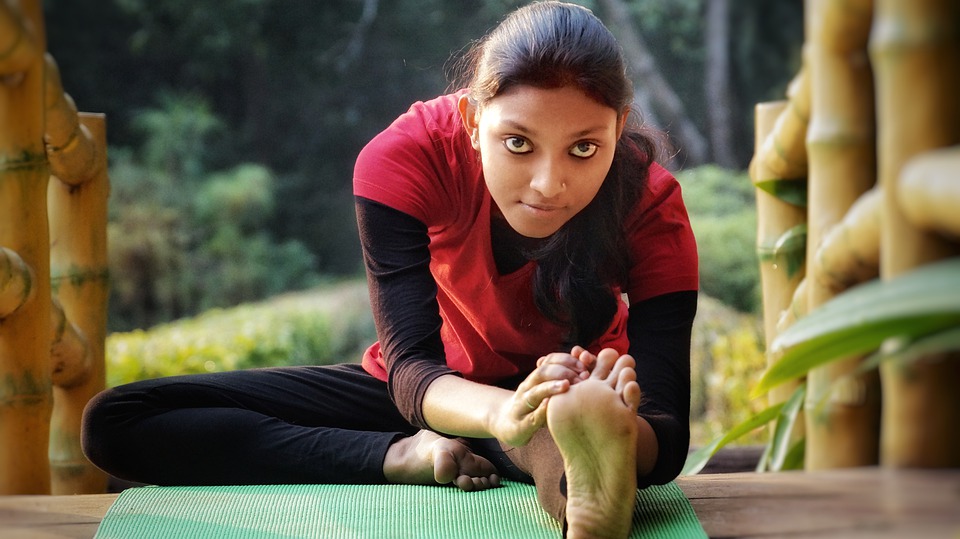7-minute read.
This post is from our guest author Anupama Das, a certified Yoga therapist who has been practicing the Krishnamacharya tradition of yoga for over 15 years.

In the last 15 years Yoga has taken off across the world and acquired many variations. It is heart-warming to see this time tested science enabling people all around. However not all variations come from a deep understanding of this science. With this blog, I wish to address what is yoga, how can women benefit, why yoga needs to be tailored to each person based on the principles defined in Krishnamacharya tradition of yoga – a form that was established by Tirumalai Krishnamacharya, a scholar and often referred as “The Father of Modern Yoga”.
What Is Yoga?
Yoga is a powerful tool to keep the mind and body healthy. It facilitates in bringing about a sense of balance within oneself thus promoting both physical and mental health. Traditional ashtanga yoga has 8 parts to yoga. The popular ones are:
- Asana – physical postures
- Pranayama – breathing techniques
- Dhyana – meditation
The lesser known components include yama (attitude towards the outside world), niyama (attitude towards ourselves), dharana (concentration), pratyahara (withdrawal of the senses) and samadhi (liberation).
Let’s look at how women can benefit from yoga.
Yoga For Women – The Krishnamacharya Way.
Women go through a range of physical and emotional changes from puberty to menopause which may include pregnancy for those who choose to go through it. Yoga can help them manage these stages with grace.
PolyCystic Ovarian Disorder (PCOD), PMS /menstruation, issues with pregnancy and conception, menopause, depression & breast cancer is common among women today. Yoga can be a great way to reduce the disturbances within.
The breathwork or pranayama helps retain focus and relaxes the mind and body. Asanas work not only on different parts of the body keeping them flexible and strong, they also work on the internal organs and nervous system.
There are several postures or asanas that support better health for women.
- Pascimatanasana and upavistakonasana, both seated forward bends helps lower back and the abdominal area.
- Apanasana, a simple yet important asana for women, works on the lower abdominal or apana area. By bringing about balance in this area, issues related to menstruation, digestion and pregnancy can be minimized.
- Trikonasana parivrtti, a standing twist, is quite beneficial for women with high sugar levels.
- Breathing techniques like Kapalabhati work actively on the diaphragm. It involves forceful exhalations from the nose along with powerful contractions of the abdominal muscles. This technique clears the nasal passages and also strengthens the diaphragm. It is not advisable for people with certain issues like high blood pressure, eye problems, etc to do this.
Please DO NOT try any of the postures without proper guidance. Read on and you will know why.
You’re Unique. So Is Your Yoga Routine.
About Krishnamacharya Yoga: One of the fundamental principles of Krishnamacharya yoga is internalizing that each individual is different in the way their body functions, their ability, habits, food, faith and mental makeup. Hence, the most effective way of bringing about good health would be a specific approach considering all these factors as they are interlinked. Here are two case studies: one when this principle is ignored and another one when it is incorporated.
Case study #1: A generic posture or asana suggestion can turn detrimental.
Rukmani (name changed for privacy), an 80 year old lady was my regular. One day she said she wanted to rest as she had developed back pain. I wondered what went wrong in the last 5 days since I’d met her. Upon probing she shared that a physiotherapist (not a certified yoga professional) had asked her to do the bridge posture for strengthening her back.
There is nothing wrong with the pose, except that Rukmani didn’t have the strength, nor the structural ability to do it. A misinformed advice pushed her health several steps behind.
Case study #2: Same symptoms yet different diagnosis
Sara (name changed for privacy), a young girl who came in with irregular periods was perfectly healthy in every other way. She didn’t understand why it was erratic. With systematic questioning, we found that the delay happened around her exams (mental agitation). However, in two other cases of irregular periods, the cause was occurance of fibroids for one and being overweight for the other.
These three people were given three different approaches to follow in yoga, including suggestions on diet and lifestyle although all three came to me with the same problem.
So following postures off the internet or copying someone else without holistic understanding more often leads to no or disastrous results.
Bring Back Your Balance.
As women move away from the condition of ‘good health’ with any life event, a judicious mix of the various components of yoga and other lifestyle changes can bring her back to the point of equilibrium. It need not always be just one asana or a particular pranayama technique. It has to be a holistic combination of tools and techniques so that she gets the well-deserved overall sense of well-being.



Thank you! We have some good content coming your way. So bookmark the link 🙂